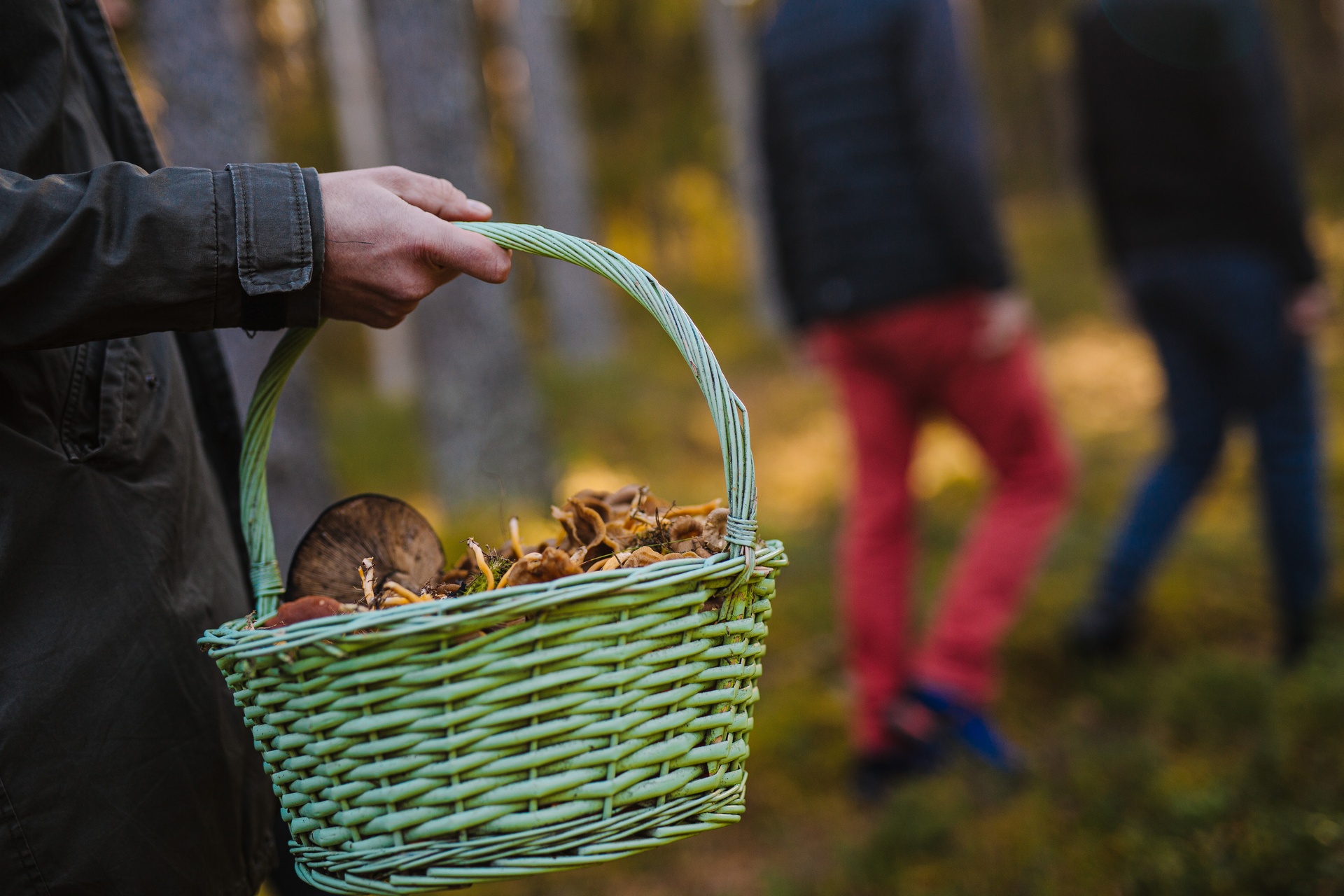
Autumn foraging in Estonia
The forests overflow with mushrooms and berries from the beginning of July until the end of October. Here's where to go.
Estonia is half covered by forests, and foraging is important to traditional Estonian cuisine.
From the beginning of July until the end of October, the forests overflow with mushrooms, nuts, herbs and berries, which can all be found on menus across Estonia.
A highlight of any visit to Estonia during these months is a tour of the forests accompanied by an expert guide who will know the best foraging spots and share tips on identifying the best produce. RMK has also created a list of campsites near good foraging grounds.
Take a workshop to learn how to prepare the food you find, or visit one of the many fine-dining restaurants where chefs use this rich seasonal produce to reflect the beautiful landscape. Read on for ways to enjoy the delicious flavors of autumn in Estonia.
Berries
The most popular berries to pick in Estonia are the bilberry (a Nordic wild blueberry), cowberry, cranberry, wild strawberry, wild raspberry, and cloudberry. The best place for cranberry picking is in South Estonia, where the first World Cranberry Picking championship was held in the autumn of 2010 in the Emajõe Suursoo Nature Reserve.
Visit northwest Estonia to gather many different varieties of berries. Visitors can discover the wilderness of Estonia while searching for fruits to forage. Best at the end of summer, guided tours educate visitors on how Estonians have used the forest for food throughout history by leading them to lovely berry-picking spots.

Source: Priidu Saart
Mushrooms
For those foraging for mushrooms, the most popular variety is chanterelles. Noted for their distinctive appearance, these yellow mushrooms are most commonly cooked in a creamy sauce served with pasta or grains. Other local favorites are the milk mushroom, boletus, and russula. Although the forests across Estonia are abundant with edible mushrooms, looks can be deceiving, so it is recommended that an expert join you to ensure that the mushrooms are selected safely.
Soomaa National Park—Estonia's second largest national park—is highly recommended for mushroom lovers. Visitors can tour the forest with an expert guide who will teach them about different kinds of mushrooms and highlight which ones are safe to eat. The tours also touch upon preservation techniques, such as pickling, drying, salting, and marinating, showing how to best use them in cooking.

Source: Ken Mürk
Foraging tours around Estonia
Going into the forest alone can feel daunting. Thankfully there are mushroom- and berry-picking tours where you can go with an expert guide.
Saaremaa's wild bounty
To experience Estonia away from the mainland, Saaremaa—the largest island—is known for its prime mushroom and berry-picking locations. Nicknamed “SPA-remaa” due to its high density of spas per capita, the island is a great place to experience the foraging traditions as part of a wellness retreat. The spa treatments here often use natural ingredients, such as red algae sourced straight from the beaches of Saaremaa.
Foraging allows visitors to fully immerse themselves in Saaremaa’s landscape, using this to connect with the island's forests. The Koigi Bog Hiking Trail combines a journey through Saaremaa’s bogs with a cranberry-picking trail and is best experienced in the autumn months.

Berries are not just for eating!
Juniper is used during massages to cleanse the body and is a favorite treatment in the island's spas.
Where to go mushroom and berry picking
Here are a few places you can try foraging for wild delicacies.
Fine dining in the Great Outdoors
One of the joys of autumn foraging is eating outside by the campfire.
Dining with flavors from nature
Learn about the foods you can find in the forest, and then end the day with a meal featuring all these wonderful wild ingredients.
Fine dining on foraged foods
During harvest season, Estonia celebrates fresh produce and nature through its gastronomy.
In addition to visiting the forest, one of the best ways to experience its flavors is by dining out. A new generation of Estonian chefs is pioneering a rapidly emerging fine-dining scene, transforming foraged produce into innovative, modern cuisine. These chefs use centuries-old techniques, traditional, seasonal ingredients, and contemporary European methods to create a fusion cooking style.
Estonia has three MICHELIN Green Stars; the two locations outside of Tallinn focus on combining the best of the Estonian environment with fine dining. SOO Restaurant is part of the luxury Maidla Nature Resort, while Kolm Sõsarat is at the edge of Karula National Park.
Hiis Restaurant offers a tasting menu inspired by the surrounding nature on weekends. The team is dedicated to sustainable cooking and showcasing local forest products.
Another rural experience, Ööbiku Gastronomy Farm Restaurant serves a unique 5-course meal created from local farm and seasonal forest produce. Located just a 50-minute drive from Tallinn, Ööbiku offers a special dining experience in a picturesque setting. All guests will have the same menu, curated by owner and head chef Ants Uustalu, and will be served drinks specially selected to match the meal.

Ready to go out and pick berries and mushrooms?
Read on for additional suggestions when heading out into the forest.
Final words of advice
What to bring
If you do decide to venture out into the wild without a local guide, make sure you bring a raincoat, waterproof shoes, a fully charged phone with a compass app, and a power bank for backup. Between May and October, it is highly recommended that you use an insect repellent effective against both mosquitos and ticks. To avoid getting bitten, cover your legs and ankles and wear a hat.
What to pick... and not to pick
While Estonian forests are abundant with edible and delicious mushrooms, looks can be deceiving. Unless you are experienced in mushrooming, do your homework on picking and preparing different types of mushrooms...or just stick with berry picking.
In the unlikely event that you get lost, call 112 for assistance.
Get inspired
Last updated
25.10.2024